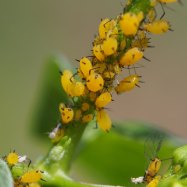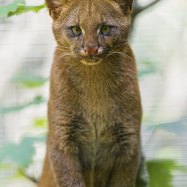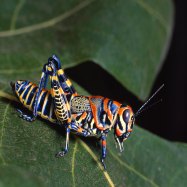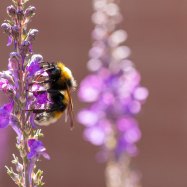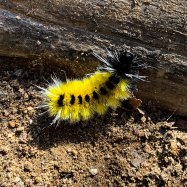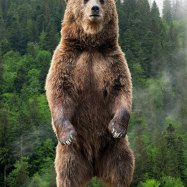
Black Dragon Lizard
Up to 160 cm
The Black Dragon Lizard, found in Asia and Oceania, can grow up to 160 cm in length. It belongs to the Varanidae family and has a long, slender body with powerful legs. With its unique appearance and size, it is a fascinating creature to observe in its natural habitat. Keep an eye out for this majestic lizard during your travels in Asia and Oceania. #BlackDragonLizard #Varanidae #Asia #Oceania
Animal Details Summary:
Common Name: Black Dragon Lizard
Kingdom: Animalia
Habitat: Tropical rainforests and forests
Discover the Mystical Black Dragon Lizard: Indonesia and Papua New Guinea's Majestic Creature
When we think of dragons, we often imagine fire-breathing mythical creatures from our childhood stories. But did you know that there is a real-life "dragon" that roams the tropical rainforests of Indonesia and Papua New Guinea? Meet the Black Dragon Lizard, scientifically known as Varanus beccarii – a fascinating creature that not only resembles a dragon but also has some remarkable features that make it stand out from other lizards.This long, slender lizard belongs to the Varanidae family, also known as the monitor lizards. It has a close resemblance to the Komodo dragon, its larger and more famous cousin, but with distinct features that make it equally as mesmerizing Black Dragon Lizard. Let's dive into the world of the Black Dragon Lizard, understand its habitat, feeding habits, and unique characteristics that make it a must-see for animal enthusiasts.
An Introduction to the Black Dragon Lizard
The Black Dragon Lizard's scientific name, Varanus beccarii, is derived from the name of Italian explorer Odoardo Beccari. It was he who first documented the species in 1872 during his expedition to New Guinea, hence the geographical distribution of this magnificent creature.The Black Dragon Lizard is also known by other names such as the Black Tree Monitor, Alterra Wood Monitor, and Lesser Beccari's Monitor. However, its most common name, Black Dragon Lizard, is a result of its dark color and dragon-like appearance.
Habitat and Geographical Distribution
The Black Dragon Lizard is native to the tropical forests and rainforests of Indonesia and Papua New Guinea, making it one of the few animals that are endemic to these regions. These lizards can be found in the dense rainforests, climbing trees and branches with ease due to their strong legs and claws.One of the most interesting facts about the Black Dragon Lizard is that it has a high adaptation to its environment. Its dark brown or black coloration with yellow spots helps it blend in perfectly with the dark forest canopy, making it difficult for predators to spot Booby.
Physical Appearance and Body Shape
The Black Dragon Lizard has an elongated, slender body that can grow up to 160 cm in length, with the tail accounting for almost half of its total length. This makes it the longest of all the monitor lizards. Its snout is also longer and thinner, giving it a distinctive and unique look.One of its most striking features is its scales, which are arranged in well-defined rows, giving it a bumpy appearance. These scales are a combination of black and yellow, creating a stunning contrast that makes the Black Dragon Lizard a sight to behold.
Feeding Habits
The Black Dragon Lizard is a carnivorous reptile, and its diet mainly consists of insects, small mammals, and birds. Their keen eyesight and agility make them excellent hunters, especially in the trees where they can stealthily approach their prey. This is facilitated by their long, slender bodies, which enable them to move swiftly through tree branches.Interestingly, the Black Dragon Lizard is also known to eat eggs, making it an opportunistic predator in its natural habitat. Its sharp claws and powerful jaws help it crack open bird eggs and feed on the nutritious yolk inside.
Behavior and Temperament
Despite its dragon-like appearance, the Black Dragon Lizard is not an aggressive creature. It is shy and prefers to retreat and hide when confronted by humans or other predators. However, when provoked or threatened, it can use its sharp claws and tail to defend itself.The Black Dragon Lizard is also not a social animal and prefers to spend most of its time either hunting or basking in the sun. Its solitary nature, along with its nocturnal habits, makes it challenging to spot in its natural habitat.
Importance in Native Culture
In Indonesian and Papua New Guinean culture, the Black Dragon Lizard is seen as a mystical creature. Its appearance and behavior have been, and still are, associated with various legends and superstitions. For instance, some local tribes believe that these lizards possess magical powers and can bring good luck. In contrast, others see them as an omen of bad fortune.The Black Dragon Lizard is also a vital symbol in traditional dances and rituals, where it is often depicted as a protector of the forest and a symbol of strength and agility.
Conservation Status
Unfortunately, like many other animal species, the Black Dragon Lizard is facing threats to its existence. Deforestation, due to logging and clearing of land for agriculture, is one of the main causes of the declining population of this species. Many studies have shown that these lizards are highly sensitive to habitat changes, which makes them vulnerable to extinction.The International Union for Conservation of Nature (IUCN) has listed the Black Dragon Lizard as a vulnerable species. Ongoing conservation efforts, including the creation of protected areas, have proved to be effective in safeguarding this species. However, more needs to be done to preserve their natural habitat and promote their coexistence with humans.
In Conclusion
The Black Dragon Lizard is a magnificent creature that continues to intrigue animal enthusiasts and researchers alike. With its dragon-like appearance, unique features, and vital role in local culture, it is undoubtedly a remarkable species that deserves our attention and protection. As more efforts are made to conserve its habitat, we can hope to see this mystical lizard thrive in its natural home in the tropical rainforests of Indonesia and Papua New Guinea.
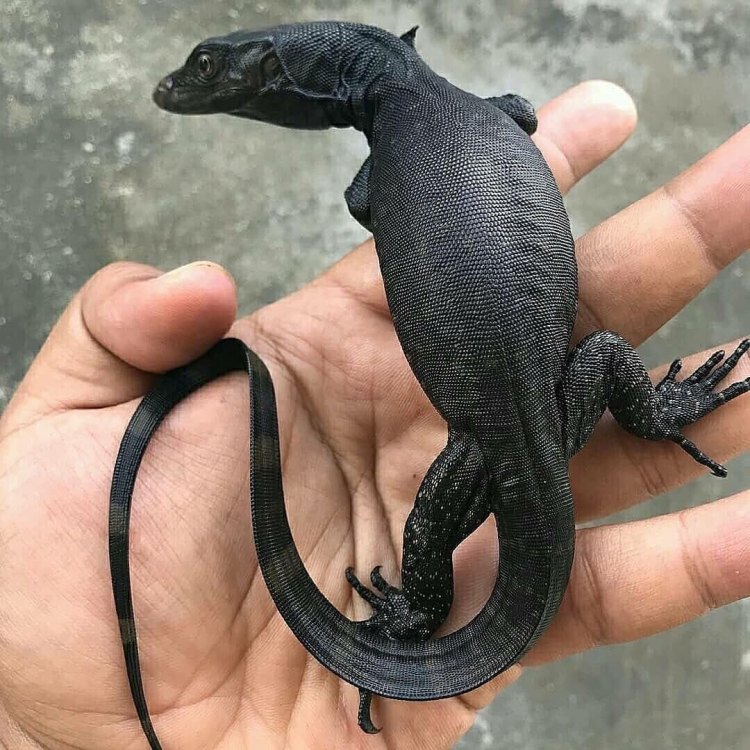
Black Dragon Lizard
Animal Details Black Dragon Lizard - Scientific Name: Varanus beccarii
- Category: Animals B
- Scientific Name: Varanus beccarii
- Common Name: Black Dragon Lizard
- Kingdom: Animalia
- Phylum: Chordata
- Class: Reptilia
- Order: Squamata
- Family: Varanidae
- Habitat: Tropical rainforests and forests
- Feeding Method: Carnivorous
- Geographical Distribution: New Guinea
- Country of Origin: Indonesia and Papua New Guinea
- Location: Asia and Oceania
- Animal Coloration: Dark brown or black with yellow spots
- Body Shape: Long, slender body with strong legs
- Length: Up to 160 cm
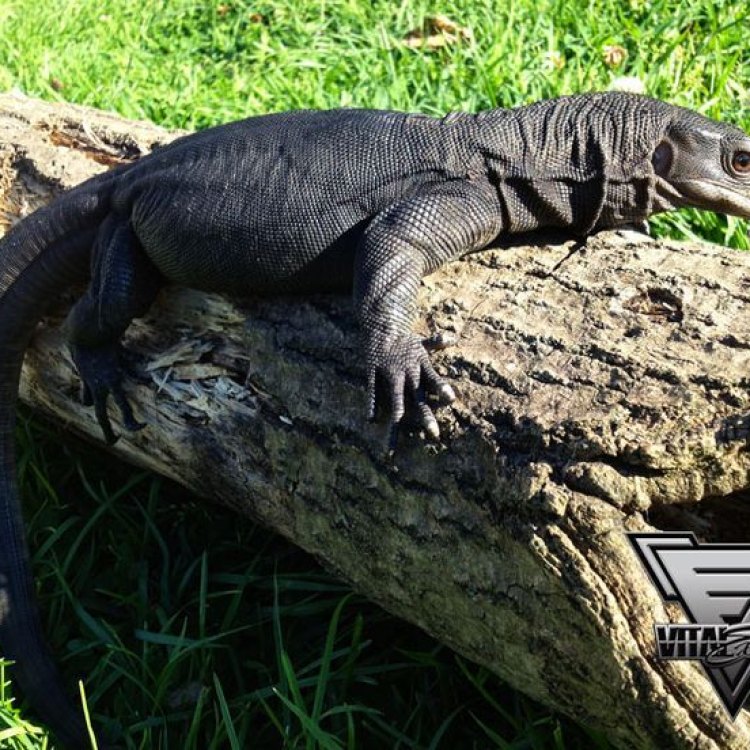
Black Dragon Lizard
- Adult Size: Around 120-160 cm
- Average Lifespan: Unknown
- Reproduction: Oviparous
- Reproductive Behavior: Mating occurs during the wet season
- Sound or Call: Unknown
- Migration Pattern: Unknown
- Social Groups: Solitary
- Behavior: Nocturnal and arboreal
- Threats: Habitat loss and hunting for the pet trade
- Conservation Status: Data Deficient
- Impact on Ecosystem: Unknown
- Human Use: Pet trade
- Distinctive Features: Large size and black coloration
- Interesting Facts: Black Dragon Lizards are one of the largest monitor lizard species in the world.
- Predator: Unknown
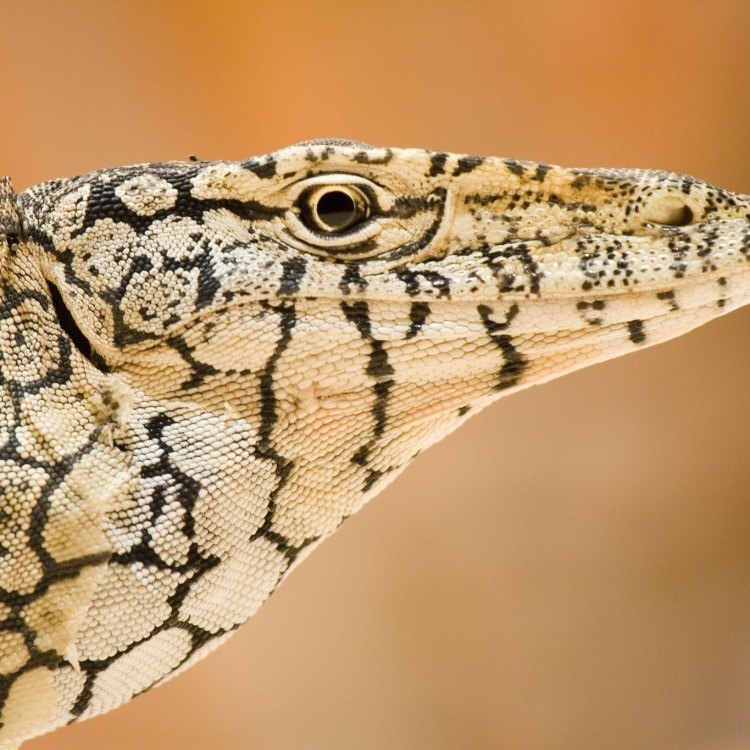
Varanus beccarii
The Enigmatic Black Dragon Lizard: A Giant in the Shadows
Deep within the dense, humid forests of Southeast Asia, hiding among the treetops or creeping along the forest floor, lives a species that has captured the imaginations of many: the Black Dragon Lizard. This enigmatic creature, with its large size and striking black coloration, has fascinated scientists and nature enthusiasts alike. But despite its commanding presence, very little is known about this elusive species. In this article, we will delve into the unique features and mysterious behaviors of the Black Dragon Lizard, shedding light on a creature that continues to remain shrouded in mystery PeaceOfAnimals.Com.One of the most striking features of the Black Dragon Lizard is its impressive size. As an adult, it can reach a length of around 120-160 cm, making it one of the largest monitor lizard species in the world. Its sheer size and sleek, black body give it a formidable appearance, earning it the title of "dragon" in its common name. However, despite its intimidating appearance, the Black Dragon Lizard is a shy and reclusive species, preferring to avoid human contact.
Another intriguing aspect of the Black Dragon Lizard is its reproductive behavior. This species is oviparous, meaning it lays eggs rather than giving birth to live young. Mating occurs during the wet season, which varies in different parts of its range. During this time, the males will engage in physical combat to compete for the attention of females. Once a pair has mated, the female will lay eggs in a shallow nest dug into the soil Bullfrog. The eggs will then incubate for several months until they hatch and the young lizards emerge.
Despite their large size, Black Dragon Lizards are surprisingly nimble and agile. They are skilled climbers, using their powerful limbs and sharp claws to navigate the treetops with ease. In fact, these lizards are primarily arboreal, meaning they spend most of their time in trees. They are also nocturnal, meaning they are active at night, which allows them to avoid the scorching heat of the sun. This behavior also makes them difficult to study, as they are often hidden in the darkness of the forest.
As solitary creatures, Black Dragon Lizards do not form social groups or exhibit any communal behavior. They prefer to live alone, only coming together during mating season. Due to their nocturnal and solitary lifestyle, very little is known about their migration patterns. It is believed that they may move to different areas in search of food and shelter, but this remains largely unconfirmed.
One of the biggest threats to the Black Dragon Lizard is habitat loss. As human populations continue to grow and encroach on their natural habitat, these lizards are losing their homes at an alarming rate. This is especially true in countries like Malaysia and Indonesia, where deforestation for agriculture and logging is rampant. Additionally, the Black Dragon Lizard is often hunted for the pet trade, where it is highly sought after for its size and striking appearance. This, coupled with their slow reproductive rate and low population numbers, has put this species at risk of extinction.
Currently, the conservation status of the Black Dragon Lizard is listed as Data Deficient by the International Union for Conservation of Nature (IUCN). This means that there is not enough data available to accurately assess the population numbers and conservation status of this species. However, there is growing concern among conservationists that the Black Dragon Lizard may be at risk of extinction in the near future if measures are not taken to protect its habitat and reduce the threat of hunting.
Despite its elusive nature, the Black Dragon Lizard plays an important role in its ecosystem. As top predators, they help to keep populations of smaller animals in check. They also play a vital role in seed dispersal, aiding in the growth and regeneration of forests. If this species were to disappear, it could have a ripple effect on the entire ecosystem, potentially leading to imbalances and disturbances.
As with many unique and fascinating animals, the Black Dragon Lizard has also become a victim of the exotic pet trade. Many people are captivated by their size and peculiar appearance, and are willing to pay large sums of money to own one as a pet. However, this practice is unethical and often contributes to the decline of wild populations. Conservation efforts must focus on educating the public on the importance of allowing these creatures to thrive in their natural habitats.
In conclusion, the Black Dragon Lizard remains a captivating and mysterious species, with much of its life still shrouded in secrecy. Its large size and black coloration make it stand out in its habitat, but its solitary and nocturnal nature keeps it hidden from prying eyes. As humans continue to encroach on its habitat and hunt it for the pet trade, the survival of this magnificent creature hangs in the balance. It is our responsibility to protect and preserve the Black Dragon Lizard and the delicate ecosystem it inhabits, for the future generations that will hopefully have the opportunity to witness its majesty in the wild.
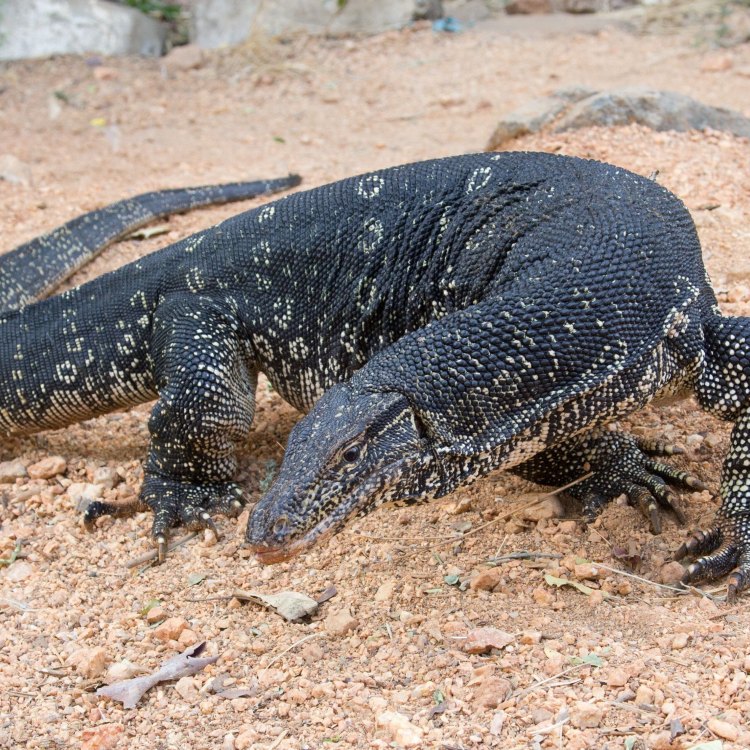
Discover the Mystical Black Dragon Lizard: Indonesia and Papua New Guinea's Majestic Creature
Disclaimer: The content provided is for informational purposes only. We cannot guarantee the accuracy of the information on this page 100%. All information provided here may change without prior notice.

